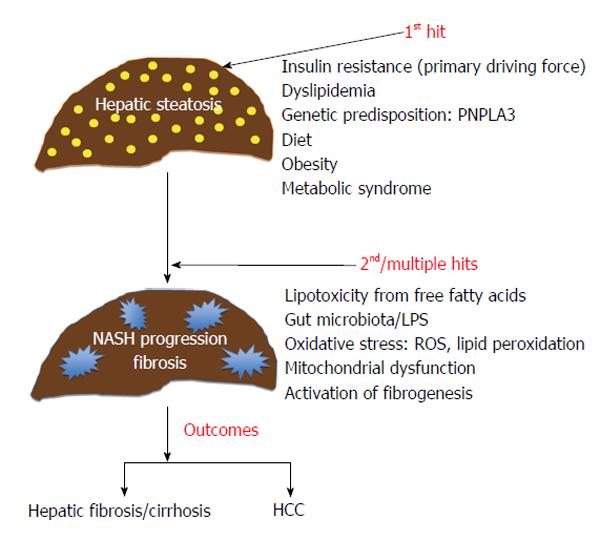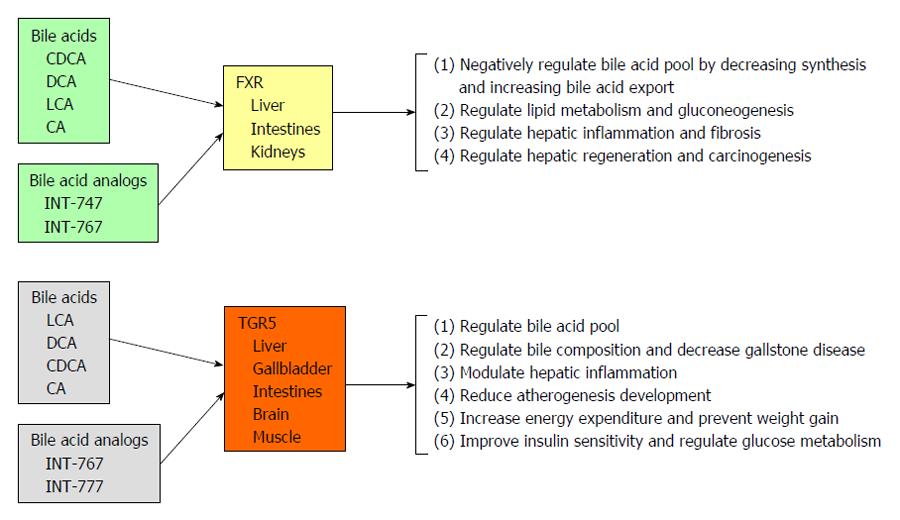Copyright
©The Author(s) 2015.
World J Hepatol. Dec 8, 2015; 7(28): 2811-2818
Published online Dec 8, 2015. doi: 10.4254/wjh.v7.i28.2811
Published online Dec 8, 2015. doi: 10.4254/wjh.v7.i28.2811
Figure 1 Pathogenesis of nonalcoholic steatohepatitis.
Insulin resistance is considered a primary driving force for hepatic steatosis by promoting lipolysis of peripheral adipose tissue, and increasing hepatic uptake of free fatty acids for de novo lipogenesis. The second hit, or multiple hits, involve genetic predisposition such as PNPLA3, pro-inflammatory processes mediated by the gut-liver-axis with microbiota imbalance, mitochondrial dysfunction, activation of oxidative stress pathways, and induction of lipotoxicity from free fatty acids. HCC: Hepatocellular carcinoma; NASH: Nonalcoholic steatohepatitis; PNPLA3: Patatin-like phospholipase domain containing 3; LPS: Lipopolysaccharides; ROS: Reactive oxygen species.
Figure 2 Characteristics of farnesoid X receptor and transmembrane G protein-coupled receptor 5, and their functions.
CA: Cholic acid; LCA: Lithocholic acid; DCA: Deoxycholic acid; FXR: Farnesoid X receptor; TGR5: Transmembrane G protein-coupled receptor 5; CDCA: Chenodeoxycholic acids.
- Citation: Yuan L, Bambha K. Bile acid receptors and nonalcoholic fatty liver disease. World J Hepatol 2015; 7(28): 2811-2818
- URL: https://www.wjgnet.com/1948-5182/full/v7/i28/2811.htm
- DOI: https://dx.doi.org/10.4254/wjh.v7.i28.2811










